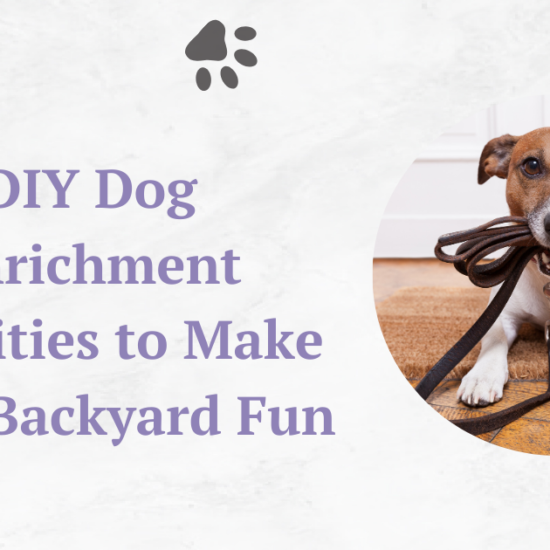Dog obedience training is an important part of being a good pet owner. In addition to strengthening the link between dog and owner, dog behavior training benefits the dog, other animals, and people.
Table of Contents
Introduction
Dogs greatly benefit from learning basic obedience because it teaches them to respond appropriately to human commands in a variety of settings. This tutorial will explain why dog obedience training is so crucial, what the basic concepts are, and how to get your dog to obey your directions.
6 Reasons You Must Give Your Dog Obedience Training
Dog obedience training entails much more than just learning commands and performing tricks. Training a dog to be a well-adjusted member of society includes teaching him or her manners and social skills. This procedure is crucial to a dog’s upbringing and development since it instills traits that help canines and their humans get along better. Let’s go deeper into the complex significance of dog behavior training , looking at how it extends beyond simple commands to make life better for pets and their human companions.
- It Ensures Your Dog’s Safety
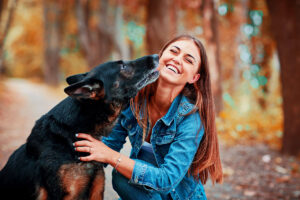
When it comes to owning a dog, safety is of the utmost importance, and basic obedience training is a vital first line of defense. Teaching your dog the fundamentals of obedience with commands like “sit,” “stay,” and “come” gives them more than just obedience; it also gives them potentially lifesaving abilities. Dogs that have been taught these commands are less likely to engage in harmful activities. The easy-to-learn “sit” command can keep a dog from darting out into traffic, while “stay” keeps them where they belong, and “come” serves as an emergency recall. Dogs can learn to be more cautious and secure when exploring new areas by internalizing these commands.

Successful relationships between humans and their four-legged friends depend on open lines of communication. Even though dogs can’t speak our language, they are surprisingly intelligent and responsive to training. Dog’s obedience helps close the gap in understanding between dogs and their human companions. By learning to link specific commands to specific behaviors, dogs can better understand what their humans want from them. This shared comprehension strengthens the bond between human and animal, allowing for richer communication between pet and master.
- It Encourages Your Dog’s Emotional Development

A dog’s emotional development is greatly impacted by the experiences it has with other animals, humans, and the world around it, making socialization an essential part of a dog’s upbringing. The exposure that dogs receive during basic obedience training to new environments and people is crucial in this regard. Dogs benefit from structured training sessions because it helps them feel more comfortable in new situations. This familiarity promotes assurance, which in turn reduces fear and moderates aggressive behavior. Dogs who have been properly socialized are better able to take in new experiences without becoming anxious or fearful.
- It Boosts the Bond Between You and Your Dog

Dog behavior training is more than simply an opportunity to teach manners; it is a bonding experience for both owner and pet. Positive reinforcement approaches promote a positive relationship between training and desirable results by rewarding desired actions with treats, praise, or affection. The owner also benefits from this favorable relationship since they will find training a pleasurable experience. A stronger and more rewarding relationship can be built on the foundation of these shared experiences of success, growth, and closeness.
- It Reduces Your Dog’s Problematic Behavior
Dog owners frequently confront difficulties with their pets’ behavior, such as barking too much or chewing too much furniture. Dog behavior training is a preventative method of dealing with and minimizing these problems. Training gives a dog a healthy outlet for its boundless energy and keeps it from developing bad habits by teaching it to focus on the right things. Dogs can prevent the development of undesirable habits by learning to redirect their natural impulses during training sessions.
- It Encourages Good Behavior in Public

Dog obedience training is essential for your dog’s good behavior in public, which is part of the larger set of duties that come with dog ownership. Dogs with good manners are more accepted in public places like parks and cafes because their actions are more manageable. In addition, many areas have laws requiring dogs to be on leashes or have an effective recall command. Dog behavior training is in line with these statutory requirements, and it helps dogs traverse public settings in a way that is safe for both humans and other animals.
6 Important Keypoints for Upbringing an Obedient Dog
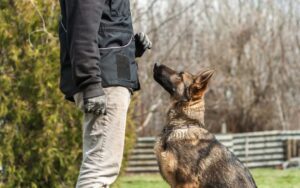
Training a dog to obey commands is an evolving process that is grounded in a number of fundamental tenets. These foundational concepts provide the framework for effective training methods, helping owners bring up a dog that is obedient and well-mannered. By internalizing and using these key principles, dog owners may approach training with the correct attitude and methods, fostering an atmosphere that is optimal for the dog’s development and the human companionship it seeks. Let’s go deep into these cornerstone concepts and figure out their relevance in dog obedience
- Positive Reinforcement
Positive reinforcement is the most essential part of dog obedience training. This theory relies on the fact that positive reinforcement for good behavior strengthens the link between a request and its subsequent fulfillment. Treats, praise, gifts, and affection are all acceptable forms of reward.
Dogs are highly motivated by these rewards, and as a result, they are more likely to reliably exhibit the behaviors that earn them. Training becomes more fun for both the dog and the owner as a result of the positive emotional connection that is formed between the command and the dog via the use of reinforcement.
- Consistency in Training
Maintaining a steady course is essential during dog obedience training. When training a dog, it’s important to be consistent so that they don’t become confused. For the best results during training, directives should be given and enforced in the same way every time. The cues, gestures, and phrases used during commands must be consistent, and this continues beyond the training itself. For a dog to learn to make connections, the training process must be consistent and predictable.
- Patience while Training
Giving your dog obedience training requires a great deal of patience. Some commands may take longer to master than others since dogs learn at different rates. The owner’s lack of patience and impatience go a long way toward encouraging the dog’s eagerness to learn and obey.
When giving your dog obedience training, it’s important to do things slowly so that the canine participants don’t feel rushed or overwhelmed. Training sessions become learning experiences where the dog and owner can both feel proud of their development as the sessions progress.
- Adjust Training to Their Attention Span
The length and frequency of training sessions are critical to keeping a dog interested and focused. Dogs have short attention spans, so sessions that go on too long risk losing their interest. Keeping a dog interested requires multiple short, targeted sessions spread out throughout the day. These brief training sessions keep the dog engaged, motivated, and open to new information. These repeated encounters provide the stage for steady development and command mastery over time.
- Going One Step at a Time
Giving your dog obedience training is like building a house: you need a strong foundation before you can add on to it. In accordance with the notion of progressive progression, training should progress slowly, beginning with less complex commands and working up to more complex ones. In order to construct more complex behaviors, it’s necessary to lay a foundation using fundamental commands. Every new talent you learn builds on the ones you already have. This methodical strategy not only boosts the dog’s self-assurance but also encourages the development of robust and flexible abilities.
- Punishment-Free Training
Avoiding punishment or harsh approaches is a fundamental tenet of dog obedience training. Dogs can learn fear, anxiety, and bewilderment from the traumatic experiences brought on by punishment. These feelings prevent the dog from learning and erode the owner’s trust. Instead, a positive reinforcement based approach provides a suitable learning environment where dogs are empowered to explore activities without fear of retribution. By emphasizing positive reinforcement, we can improve the dynamic between dog and owner.
The Step by Step Procedure for Dog Obedience Training

Basic Obedience Training
The basis for clear communication, cooperative behavior, and a pleasant dog-human bond is established through the learning of fundamental instructions. These cues not only help keep dogs safe but also aid in their intellectual and emotional growth.
Note: There might be affiliate links mentioned here. We may receive a commission if you purchase a product through an affiliate link. There is no additional charge for you. Please do your own research before making any online purchases.
Basic Commands
The four basic commands covered in this tutorial are “Sit,”*- “Stay,” “Come,” and “Down.” Using clear, step-by-step instructions, we’ll investigate how these commands are taught and how they enable dogs to respond appropriately to their owners’ cues.
- The “Sit” Command
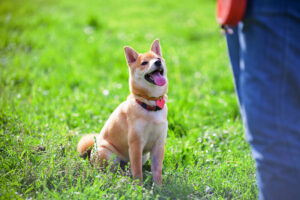
In most cases, teaching a dog to sit is the initial step in learning fundamental obedience commands. This cue not only removes the language barrier but also trains canines to pay attention and react appropriately. Here is how you can train them for this command::
- Lure with Treat: Hold a treat close to the dog’s nose, allowing it to catch the scent and focus on the reward.
- Upward Motion: Slowly move the treat upwards, guiding the dog’s gaze and head along with it. As the dog’s head follows the treat, its natural inclination is to lower its bottom to the ground.
- Sitting Position: As the dog’s rear touches the ground, and it is in a sitting position, immediately say the command “sit.”
- Reward and Repetition: Promptly reward the dog with the treat and offer enthusiastic praise. Repeat this process multiple times until the dog associates the action of sitting with the verbal command.
The dog will eventually understand the meaning of “sit” since this method gradually strengthens the association between the command and the desired behavior.
- The “Stay” Command

The “stay” instruction is essential for keeping order and staying safe. Here is a detailed plan for how to instruct it:
- Starting Position: Begin with your dog in a sitting position.
- Visual Cue: Hold your palm out in front of them, similar to the universal “stop” signal. Simultaneously, say the command “stay” in a clear and firm tone.
- Gradual Backing Away: Take a single step back while maintaining eye contact with your dog. If your dog remains in the sitting position, reward it with a treat and verbal praise.
- Incremental Distance: Over subsequent sessions, gradually increase the distance between you and your dog while instructing it to “stay.” Reward compliance with treats and praise.
- Duration Training: Progress towards prolonging the duration of the “stay.” Start by counting a few seconds before releasing the dog and rewarding it. Gradually increase the duration over time.
- The “Come” Command
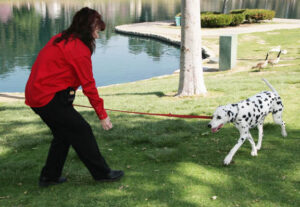
The “come” command is crucial for keeping your dog under control at all times, but especially in dangerous situations. Here’s an efficient method of instruction:
- Leash Preparation: Begin by attaching a leash to your dog’s collar. This provides a level of control during training.
- Eye-Level Connection: Get down to your dog’s eye level, ensuring direct eye contact and engagement.
- Command and Leash Guidance: Say the command “come” in an inviting tone while gently pulling the leash towards you. This encourages the dog to move toward you.
- Reward and Praise: As your dog complies and moves towards you, reward it with treats and lavish praise. This positive reinforcement strengthens the connection between the command and the action.
- Gradual Distance: Practice the “come” command in various locations, gradually increasing the distance between you and your dog. Ensure success by rewarding each successful response.
The “Down” Command

Teaching a dog to lie down on demand with the “down” command helps to instill a sense of calm and obedience. Here is a detailed plan for how to instruct it:
- Start from Sit: Begin with your dog in a sitting position. This facilitates a smooth transition to the lying down posture.
- Treat Lure: Hold a treat close to the dog’s nose and slowly lower it to the ground while saying “down.”
- Natural Movement: As the dog follows the treat’s motion, its body will naturally lower to the ground. Ensure that the dog’s elbows touch the floor.
- Reward and Praise: Once your dog is in the lying down position, promptly reward it with a treat and praise.
- Repetition and Reinforcement: Consistently practice this process, repeating the command “down” and rewarding the dog each time it complies. Gradually reduce the reliance on the treat lure.
Advanced Training
Once your dog has mastered the basic obedience instructions, you may begin exploring the world of advanced commands, which will present you and your pet with new opportunities to learn and bond. Here, we delve into the meaning of more complex instructions like “heel,” “leave it,” and “roll over,” offering guidance from the pros on how to train more efficiently and become closer to your pet as a result. Learn how to take your dog’s training to the next level so that you may better utilize your dog’s strengths and enjoy a more rewarding learning and working relationship with your dog.
Advanced Commands
Your dog’s behavior training will take on new dimensions as you progress from the foundation of basic commands to the exciting world of advanced commands. In addition to showcasing your dog’s improved abilities, teaching him or her tricks like “heel,” “leave it,” and “roll over” promotes mental and physical stimulation as well as closer contact between you and your pet.
- The “Heel” Command

With the “heel” command, it will help you keep your dog closer to you during walks. Start by practicing walking on a loose leash with your dog on your regular outings. Reward your dog for being close and attentive as you gradually introduce the “heel” command by your side. Improve your dog’s leash manners and make walks more pleasant and manageable with this command.
- The “Leave It” Command

Leave it” is a key command that ensures your dog’s safety by stopping them from picking up harmful or undesirable objects. Put a snack in your closed fist as a starting point. Say “leave it” and hide the goodie as soon as your dog shows interest. Don’t give your dog any more treats or attention until it stops attempting to get the treat. This instruction helps them learn to manage their impulses and make good decisions.
- The “Roll Over” Command

A dog’s trust and readiness to play can be displayed by the “roll over” command, which is also a cute and entertaining trick. Put your dog in a down position first. To get them to roll over, you can hold a treat close to their nose and lead them in a circle. Give them the treat and vocal praise as soon as they finish the motion. This instruction promotes motor skill development and makes for a fun way to spend time together.
5 Expert Tips for Advanced Dog Obedience Training Mastery
- Maintain Precise Timings of Positive Reinforcement
Timing is everything in the world of elite training, so keep that in mind. Give the command and the treat just after your dog does what you want him to do. Faster learning and a more permanent positive link between the order and the action are both benefits of this immediate approach.
- Give High Quality Rewards
Reward your dog with high-value treats for learning complex commands. These can be things like your dog’s favorite treats or toys. Your dog’s enthusiasm and readiness to perform difficult tasks will increase as a result of the attractiveness of these incentives.
- Stay Enthusiastic and Engaged
Your dog will respond best to training if you are enthusiastic and engaged. Keep your spirits high and your energy high, and be an inspiration to everyone around you. Your dog will pick up on your mood throughout training, so keeping it upbeat will go a long way.
- Test Obedience in Different Environments
Commands learned in more advanced training should be tested in a wide range of real-world settings. When you put your dog through this “proofing” process, you know he or she will respond reliably even when faced with novel stimuli. To test and strengthen their comprehension, begin in safe environments and progressively introduce the commands at different places.
- Seek Professional’s Advice
Advanced training can be difficult, especially if you run into behavioral issues or other obstacles. Talking to a canine behaviorist or trainer might help if you’re having trouble. You can improve your training methods and handle specific challenges with their assistance and advice.
When you commit to intensive training, you join your furry friends on a path to mastery and personal development. You’ll learn more about your dog’s unique character and abilities as you train them to perform new tasks. With each accomplished advanced command, you and your dog develop a deeper link that lasts well beyond your time together in training.
FAQs
Why is dog obedience training important?
There are a number of reasons why dog behavior training or dog obedience training is essential. It helps with safety, communication, socialization, bonding, limiting undesirable behaviors, and legal compliance in public places.
How does teaching dog basic manners make them safer?
By teaching them basic commands like “sit,” “stay,” and “come,” will help dogs avoid dangerous situations where they could be hurt, such as dashing into traffic or chasing other animals.
How does teaching obedience help in better interactions?
Dog behavior training teaches dogs to comply with human requests and demands through the use of verbal instructions. Although dogs do not have the linguistic ability to understand human speech, they can be taught to link specific instructions with specific behaviors.
Is obedience training a solution for behavioral problems?
Yes, obedience training can help with behavioral concerns like barking and chewing too much. Negative habits can be reduced, and a well-behaved, polite dog can be encouraged by focusing the dog’s energy on desirable activities.
Why is training consistency so crucial?
Consistency is key to dog behavior training since dogs learn through association and repetition. By being consistent with their directions and cues, dogs learn faster and more accurately.
How can I maximize the effectiveness of dog obedience training sessions?
Patience, brief but frequent practice, and reinforcement are keys to effective dog obedience training sessions. Success can also be achieved by keeping an optimistic outlook, employing valuable rewards, and progressively increasing the difficulty of commands.
What are some complex orders I can give my dog?
If your dog has mastered fundamental commands, you can test his or her abilities, engagement, and cooperation by teaching more complex commands like “heel,” “leave it,” and “roll over.”
When training, why is it so crucial to use high-value rewards?
For more difficult requests, a high-value incentive is required, such as a special treat or a new toy. These rewards inspire and engage dogs, making them more eager to undertake difficult activities.
In what ways may I test my dog’s obedience in different environments?
When “proofing” orders, it’s important to do so in a variety of settings and while being distracted. This promotes generalization, making it more likely that your dog will obey you even in novel situations.
Should I get expert aid if I have trouble training?
If you are having trouble with training or dealing with specific behavioral concerns, it is recommended that you consult a professional dog trainer or behaviorist. Experts can offer individualized recommendations and strategies for improving training outcomes.
Conclusion
An obedience-trained dog is more likely to be a well-behaved, self-assured, and content pet. Strong ties and harmonious relationships can be fostered between dogs and their owners if their masters take training seriously, adopt basic concepts, and use effective teaching strategies. Training requires time, patience, and consistency, but the benefits more than justify the investment. Get started on the path to canine obedience and watch your dog mature into a model of good behavior and affection.



